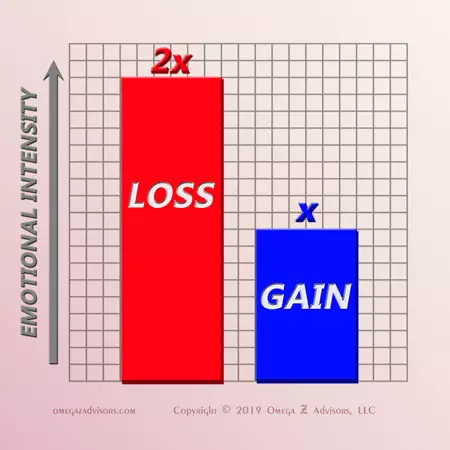Exploiting People’s Fears Of Loss And Desires For Gain
Fears of loss and desires for gain work in all of us. People exploit them. We see them in ads. We see in them in sales. They exist in all industries. They exist in politics.
The Fears Of Loss And Desires For Gain Ratio

The emotional intensity from the fear of loss outweighs that of the desire for gain by two to one.
The first step in exploiting people’s fears of loss and desires for gain is to understand how the two compare. The general guide is that fears of loss outweigh desires for gain by a two to one ratio. In short, people fear losing about twice as much as they desire gaining.
For example, the intensity of emotions wrapped around losing $20 equal that of those around gaining $40. That’s just the equal point.
Consider two things though. First, people vary. For some the ratio is greater. For some smaller. Second, two to one just balances things. This breeds wavering. Therefore, target three to one to avoid this. So, in the above example, that means going for $60, not $40.
Fear Of Loss Versus Desire For Gain, An Example
Many times this boils down to how we phrase things. Bonuses are commonly used to show this. For instance, firms usually say, “If you achieve X, we will pay you bonus $Y.” This taps the desire for gain, gaining money.
However, if we say, “We’re giving you $Y as a bonus, but if you don’t achieve X, you lose it.” This taps the fear of loss, losing money.
Now, people say the bonus, $Y, is the same in each case. Yes, true, yet the effect of both differs. Research shows people achieve X more often and by more with the fear scenario. This holds true even when people realize the bonus is the same.
Exploiting Fears Of Loss And Desires For Gains
On the surface this all means that when in doubt position an idea as attacking a loss rather than achieving a gain. It hits home harder.
Going deeper and looking at gains, this means achieving a gain must exceed the added cost by factor of three. So, if a current technology costs $100,000 a year and the new one will cost $125,000 a year, achieving a productivity gain of $25,000 a year is weak. $50,000 is borderline. We need to show at least a $75,000 yearly gain for a decisively positive response (3 x [125,000-100,000]).
In the end, remember. When exploiting people’s fears of loss and desires for gain, how we present options matters. Review the bonus example again. Yes, it helps if the numbers work too as in the tech example. Even here though, if we don’t present the loss or gain right, it won’t matter.


